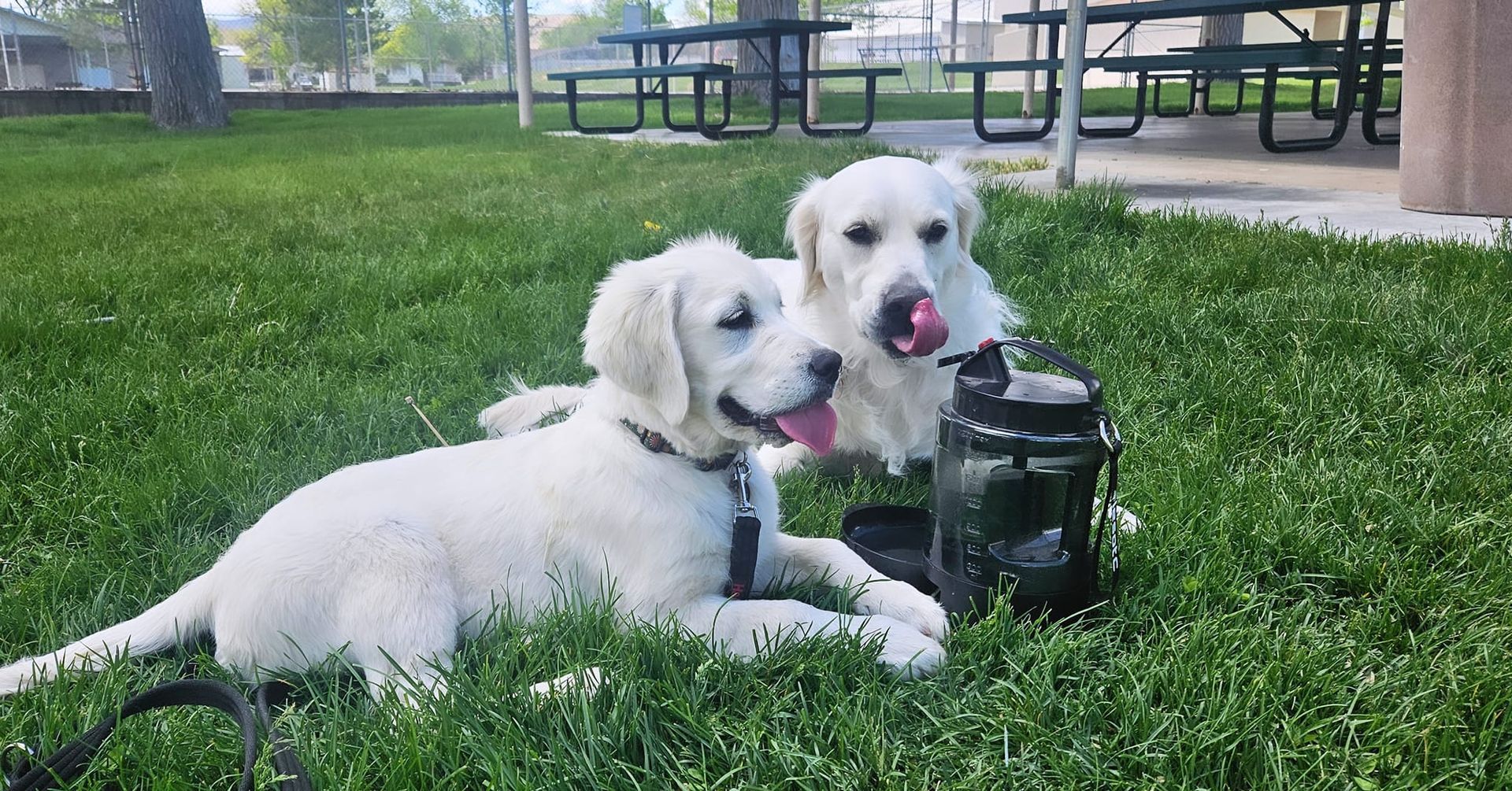Mental Stimulation
Benefits Of Doing Mental Stimulation
Engaging a dog's mind through various activities such as puzzle toys, training sessions, and interactive games not only prevents boredom but also promotes overall well-being. Mental stimulation helps alleviate stress and anxiety, reduces the likelihood of destructive behaviors out of boredom, and fosters a deeper bond between dogs and their owners. Moreover, it cultivates problem-solving skills, enhances cognitive abilities, and provides an outlet for natural instincts, leading to a happier, more fulfilled pup. By prioritizing mental stimulation in our dogs' daily routines, we not only keep them physically healthy but also nurture their intellectual and emotional needs.
Activities
Obedience Training: Obedience training not only teaches your dog basic commands but also provides mental stimulation through learning and problem-solving. Start with simple commands like sit, stay, and come, using positive reinforcement techniques such as treats and praise to motivate your dog. As your dog progresses, gradually introduce more advanced commands and tricks. Obedience training strengthens the bond between you and your dog while improving their focus, self-control, and responsiveness to commands.
Rotate your dogs’ toys: Rotating your dog's toys helps prevent boredom and keeps them mentally engaged by providing novelty and variety. Keep a selection of toys on hand and rotate them regularly, swapping out toys every few days or weeks. Introduce new toys periodically to keep your dog's interest piqued. Rotating toys prevents habituation and ensures that your dog stays mentally stimulated and excited to play.
Take different walking routes: Varying your walking routes exposes your dog to new sights, smells, and experiences, providing mental stimulation and enrichment. Explore different neighborhoods, parks, or trails during your walks to keep things interesting. Let your dog sniff and investigate their surroundings, allowing them to engage their senses and satisfy their curiosity. Taking different walking routes not only provides physical exercise but also promotes mental flexibility and reduces the likelihood of boredom.
Sensory Walks: Take your dog on sensory walks to engage their senses. Encourage them to explore different textures, smells, and sights along the way. Incorporate elements like crunchy leaves, scented plants, and varied terrain to keep the walk interesting and stimulating. Sensory walks enrich your dog's environment and provide mental and sensory stimulation outside of the home.
Interactive toys: Puzzle toys are interactive toys that challenge dogs to solve a puzzle to access treats or kibble hidden inside. There are various types available, including treat balls, puzzle feeders, and interactive treat dispensers. To use them, simply fill the toy with treats or food, and let your dog figure out how to retrieve them by rolling, flipping, or manipulating the toy.
Hide and Seek: Hide and seek is a fun game that engages your dog's natural hunting instincts. Start by hiding behind furniture or in another room and calling your dog to come find you. Use a cheerful tone of voice to encourage them to search for you. As your dog gets the hang of the game, you can hide in more challenging locations or hide treats or toys for them to find. Hide and seek promotes problem-solving skills and strengthens the bond between you and your dog through interactive play.
Fetch: Fetch is a classic game that provides both physical exercise and mental stimulation for your dog. Start by throwing a toy or ball for your dog to retrieve, using a command like "fetch" or "get it." Encourage your dog to bring the toy back to you, rewarding them with praise or a treat when they do. Fetch engages your dog's mind as they anticipate and track the movement of the toy, promoting focus, coordination, and problem-solving skills.
Car Rides: Taking your dog for car rides exposes them to new sights, sounds, and smells. Start by getting your dog accustomed to riding in the car by taking short trips to fun destinations like the park or a pet store. Use a secure harness or crate to keep your dog safe during car rides. As your dog becomes more comfortable, you can gradually increase the duration and distance of your trips. Car rides stimulate your dog's senses and provide opportunities for exploration and adventure outside of their usual environment.
Agility training: Agility courses provide both physical exercise and mental stimulation for dogs. Set up a course using agility equipment such as tunnels, jumps, weave poles, and platforms. Guide your dog through the course, encouraging them to navigate obstacles and follow your commands. Agility training challenges dogs both mentally and physically and strengthens the bond between dog and owner.
Physical Exercise vs. Mental Exercise
While physical exercise focuses on burning energy and maintaining physical health, mental exercise targets cognitive stimulation and problem-solving abilities. While a brisk walk or a game of fetch is fantastic for physical well-being, mental exercises like puzzle toys, obedience training, or scent games engage a dog's brain, providing mental enrichment. Just as humans need a balance of physical activity and mental challenges to thrive, dogs also benefit from a combination of both types of stimulation to lead fulfilling and balanced lives.
Frequency and consistency
Just like any skill or habit, mental stimulation activities require regular practice to yield maximum benefits. Incorporating mental exercises into a dog's daily routine ensures that their cognitive abilities are continuously challenged and developed. Consistency reinforces learning and helps dogs understand what is expected of them, leading to greater engagement and progress over time. Moreover, frequent mental stimulation sessions prevent boredom and provide an outlet for excess energy, reducing the likelihood of behavioral issues. Whether it's a daily training session, interactive playtime, or a puzzle toy session, maintaining a consistent schedule ensures that dogs receive the mental enrichment they need to thrive. By making mental stimulation a regular part of their routine, owners can contribute to their dog's overall happiness, well-being, and intellectual growth.
Signs Your Dog Needs More Mental Stimulation
Signs that your dog may need more mental stimulation can manifest in various behaviors and cues. These signs often include increased restlessness or pacing, excessive barking or whining, destructive chewing or digging, and attention-seeking behaviors such as nudging or pawing at you. Additionally, if your dog seems disinterested in toys or activities they once enjoyed, it could indicate a lack of mental stimulation. Dogs may also exhibit signs of frustration or boredom, such as repetitive behaviors or seeking out novel stimuli. Paying attention to these cues can help you recognize when your dog needs additional mental enrichment.







